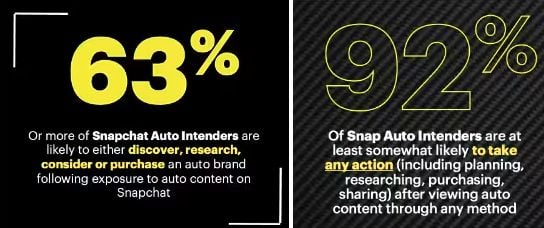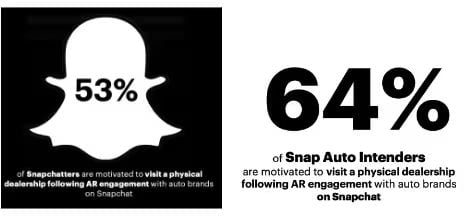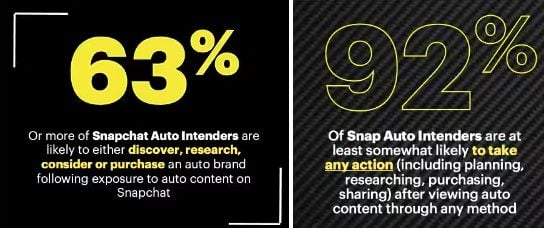Snapchat for auto marketers?
Long known as a platform for younger users, Snap’s now also making a pitch in expanded product categories, which includes car dealers, who Snap says can reach a captive, engaged audience in the app.
That’s based on a recent survey that Snap commissioned from Kantar, for which Kantar gathered responses from over 2,000 Snap users, aged 18 to 49, in order to glean insight into the role that the app has played in their auto buying process.
And the results are somewhat surprising.
First off, the data shows that 54% of Snap users are actively considering a vehicle purchase or lease within the next year, while Snapchatters are also 1.5x more likely to be actively searching for a car than non-Snapchatters.
“A significant proportion of these users are employed with higher incomes compared to their counterparts on other platforms, making Snapchat a fertile ground for premium and luxury auto brands. With a strong interest across various vehicle types, including SUVs, sedans, and luxury vehicles, there’s a notable preference for alternative fuel types, such as EVs, PHEVs, and HEVs among Snapchatters.”
Kantar’s research also found that 63% of prospective car buyers in the app are likely to discover, research, consider, or even make a purchase after exposure to brand content on Snapchat, while 92% of Snap “Auto Intenders” are likely to take action after viewing auto content on Snapchat.

The study also looked at the role that AR can play in the automotive discovery and purchase process, with 64% of Snap Auto Intenders more likely to visit a physical dealership following engagement with AR content on the platform.

These are some interesting insights, which could point to new opportunities for auto marketers, highlighting another element of potential reach that you may not have considered.
And with Pinterest also highlighting its potential for auto brands, there could be expanded opportunities in platforms beyond your current remit.
Worth considering for your 2024 planning.
You can read Snapchat and Kantar’s full study findings here.



